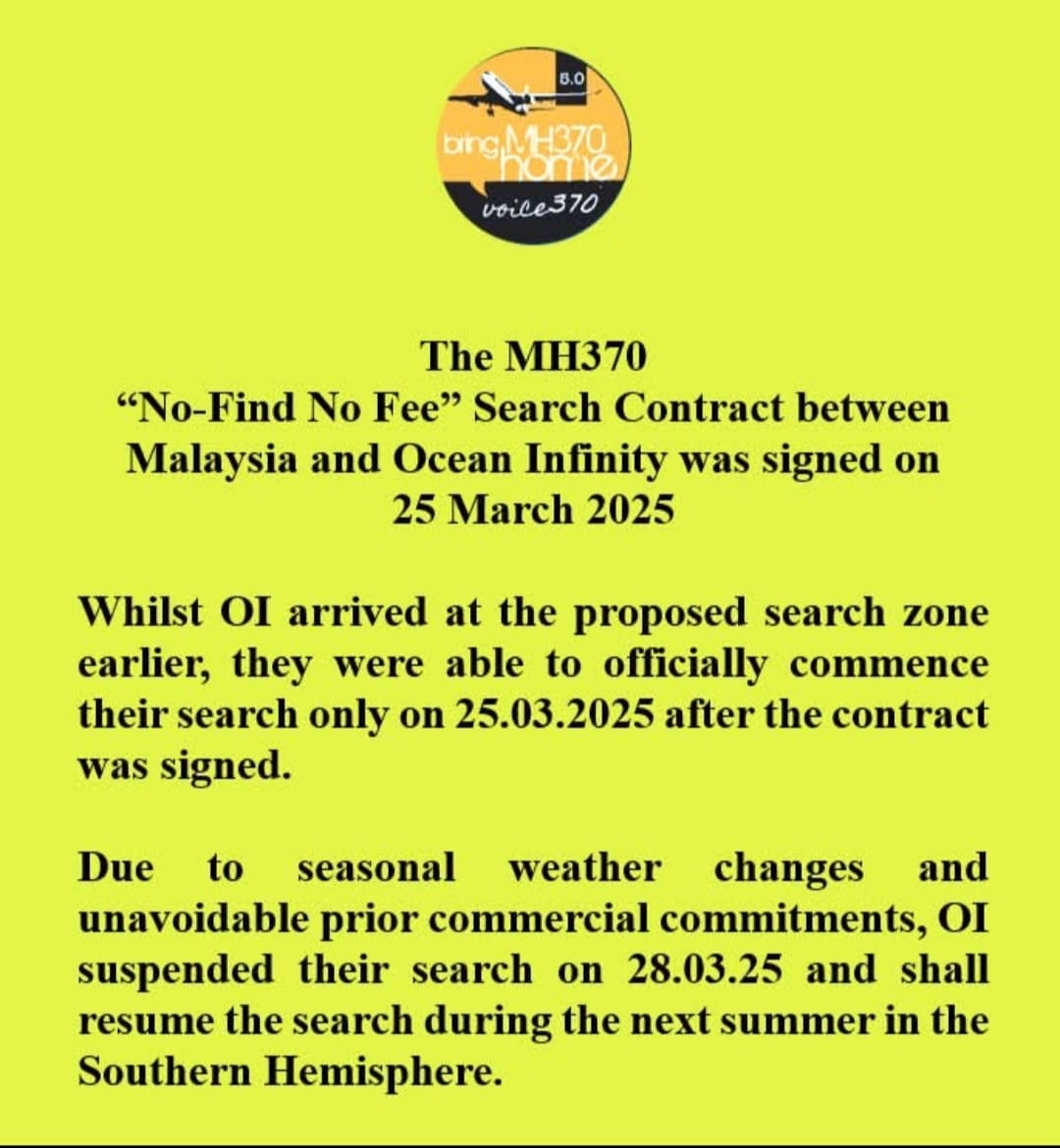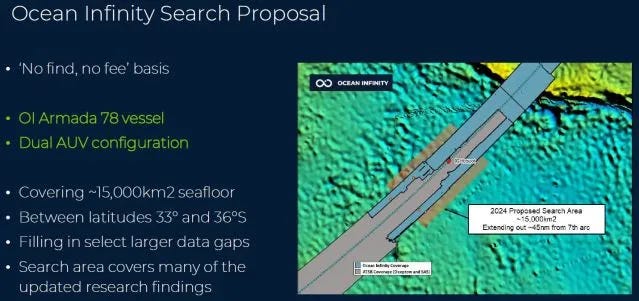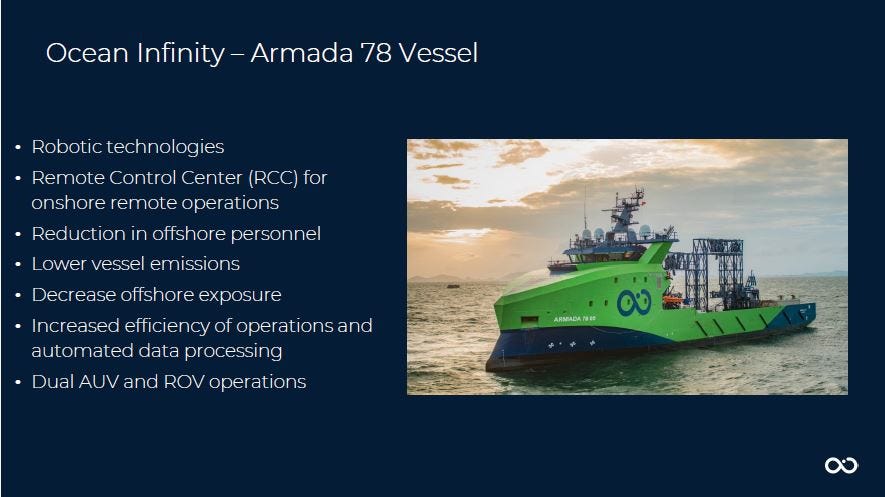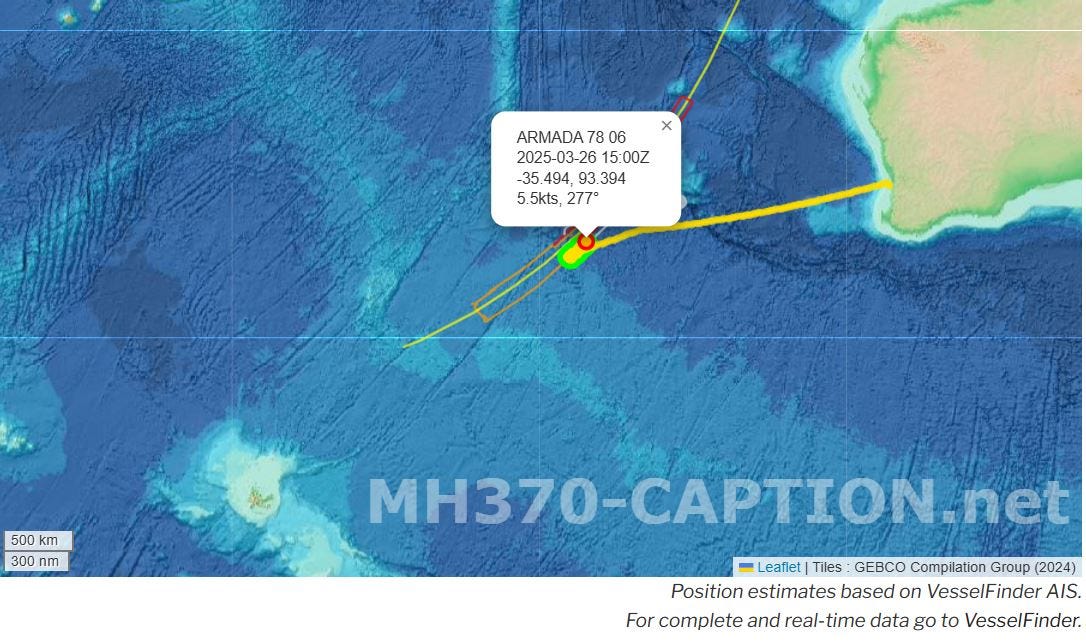MH370 next of kin announce that Malaysia and Ocean Infinity have signed search contract
LATEST UPDATE: Malaysia’s transport minister Anthony Loke said on April 2 that the agreement between Malaysia and Ocean Infinity had been signed the previous week, but the search for MH370 had since been suspended. “I think right now is not the season,” Loke said. “I think they have stopped the operation for the time being. They will resume the search at the end of this year.”
New announcement from the MH370 family support group Voice370:
UPDATE, March 29: Ocean Infinity’s vessel Armada 78 06 is now en route for Singapore, with an estimated arrival date of April 8. It is not clear as yet why the ship is leaving the Indian Ocean, not continuing its search, for now at least, and why it isn’t going back to the Australian Marine Complex at Henderson, south of Perth, where it refuelled and reprovisioned at the beginning of March.
The MH370 next of kin have announced that Malaysia and Ocean Infinity have signed a ‘no find, no fee’ contract for the exploration company’s search for the plane.
The news was posted on the MH370 Families Facebook page. The next of kin report that the contract was signed remotely, with no ceremony.
Ocean Infinity has already deployed its new robotic vessel Armada 78 06 in the southern Indian Ocean. The ship, which was deployed in the search area more than a month ago, is currently to the east of what is described as the 7th Arc.
Full details about the terms and conditions of the search have not yet been made available and no press release about the contract signing has yet been issued.
Ocean Infinity has said that it would be focusing in its new search on an area between latitudes 33°S and 36°S, wider from the 7th Arc than was previously searched.
The proposal handed over to Malaysia’s transport minister, Anthony Loke, during last year’s 10th anniversary remembrance event in Kuala Lumpur.
In its previous search in 2018, Ocean Infinity used a leased Norwegian vessel, Seabed Constructor, and its own Autonomous Underwater Vehicles (AUVs), capable of operating in depths up to 6,000 metres.
It now has new robotic vessels that can be operated completely remotely, with no crew on board.
The AUVs being used in the current search are able to spend up to four days submerged.
There are four main hotspots that have been identified as possible locations for MH370:
An area suggested by independent investigators Bobby Ulich and Victor Iannello that had already been partly searched, but which Iannello and Ulich said needed scouring again, with a widened scope. This area, which is about 2,000 km west of Perth, Australia, is centred on 34.2°S 93.8°E.
Broken Ridge, at 32.5°S 96.5°E, which American amateur investigator Blaine Gibson, who has found, retrieved, and/or handed in 22 pieces of debris, and oceanographer Charitha Pattiaratchi from the University of Western Australia say is the most important priority location. Gibson and Pattiaratchi argue that any new search should not be focused too narrowly along the 7th Arc and should include the area from 28.3°S to 33.2°S.
An area suggested by Jean-Luc Marchand from Belgium and retired Air France pilot Patrick Blelly that had not previously been searched is around a 35.7°S 93°E centrepoint. (Armada 78 06 is now northeast of the Blelly/Marchand zone.)
A location suggested by independent investigator Richard Godfrey centred on 29.128°S 99.934°E. Less than half of the area Godfrey suggests has been previously scoured. Godfrey has conducted analyses using the Global Detection and Tracking of Any Aircraft Anywhere (GDTAAA) software based on Weak Signal Propagation Reporter (WSPR) data. He has monitored radio signals sent out by radio amateurs around the world. Some investigators find his analysis compelling, but others are more sceptical.
Blelly is providing tracking information for Armada 78 06 on the MH370-CAPTION website.
The map pictured below, which shows the track of Armada 78 06, is interactive on the MH370-CAPTION website and the vessel’s position is updated at 30 minutes past the hour UTC (90 minutes behind real time).
In 2018, Ocean Infinity spent more than three months searching for MH370 in the southern Indian Ocean. The company scoured, and collected data from, more than 112,000 square kilometres of ocean floor, which is far in excess of the initial 25,000-square-kilometre target and almost the same area as was examined in the previous search over a period of two and a half years.
The previous Australian-led underwater search was suspended on January 17, 2017, after an area spanning 120,000 square kilometres was scoured.
MH370 went missing on March 8, 2014, with 239 passengers and crew on board. It was en route from Kuala Lumpur to Beijing.
Changing Times contacted Ocean Infinity for comment, but a spokeswoman said the company had no information to provide at this stage. I have also emailed the Malaysian Ministry of Transport, but have not received a response.
This article is also available on my Changing Times website.
All my articles are freely accessible, but I do need the support of my readers. If you like my articles, please do share them. If you wish to support my work financially with a donation please click this PayPal link.
If you would like to take out a paid subscription to my Changing Times website, there are PayPal subscription buttons on the website.
Thanks to all those who already support me and thanks in advance to those who will be supporting me in the future.








